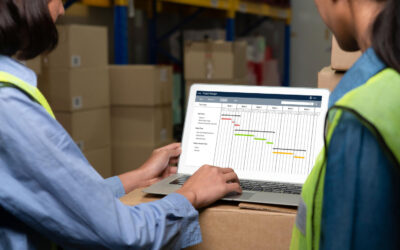The best asset tracking software gives you the ability to monitor, control and make the best out of your assets. It will have a suite of helpful features built for your needs.
How can you choose the best asset tracking software for your business? We’ve written a guide on what to look for when you’re looking to take back control of your assets.
Know Your Business
First and foremost, you need to know your industry, your assets and your business. This is because there’ll be slight tweaks and differences your asset tracking software needs to be able to handle.
The best asset tracking software lets you customise your capabilities, but there are still niches and nuances that you need to keep in mind when you’re looking to track your assets.
Knowing what you’re looking for helps tailor your decisions, especially if there is a free trial involved. So, if equipment bookings and check-outs are critical to your operations, you need to know that your software works as equipment booking software. If you have higher-value assets, you need to have software that handles depreciation.
The best way to think about what you need is to think about your assets, how they behave and how you need to track them then you can work backwards.
Consider Asset Tags
Asset tags come into consideration here, too. This is as asset tags can speed up your asset operations, but whether you use them or not will depend on the assets themselves.
You can customise asset tags or opt for RFID asset tracking if the tags need to be concealed. This means that previous gaps of weathering are filled by the ability to use metal tags and the inability to track high-value assets is no longer an issue.
Asset tags work by linking your assets to digital profiles. Then, every time you scan the tag, the asset’s profile opens, ready for edits. This means that if there’s an issue on an asset the workflow is simply to scan the tag and report the issue.
Every time a tag is scanned the last seen location also updates using your phone’s GPS, and the user who scanned the tag is logged as well as the time of the scan. This gives you a clear audit trail of your interactions with assets.
Calculate Your Potential ROI
The best asset tracking software lets you scale your usage up and down depending on what is necessary. Therefore, you’ll be able to spend more and get back more for higher-value assets.
You’ll be able to spend less on the software that you get back from it, which gives asset tracking software an edge over spreadsheets. So, if you’re tracking bespoke, high-value assets that move constantly, a fixed RFID asset tracking system may be suitable where it won’t if you’re only tracking small tools and equipment.
Keep in mind that asset tracking software saves you money by reducing duplicate purchases, minimising the number of lost assets, and increasing accountability, but it also saves you time. These time savings can translate to ROI in several different areas, as in healthcare, saving time also saves lives.
Knowing your potential ROI helps you choose the pricing package you need and the hardware you can use for your asset tracking operations.
The Best Asset Tracking Software
itemit is the best asset tracking software available on the market. This is because it’s the only software on the market where all of the above is possible.
No other software allows you to mix and match asset tracking hardware, use any QR code or barcode tags, scale your usage up or down significantly, and let you use a suite of great features.
itemit is used worldwide by thousands to track a huge range of assets. The levels of support are next to none and setting up is simple thanks to a range of streamlined features and capabilities.
To find out more about how the itemit asset tracking software can help save your business time and money, you can contact the team at team@itemit.com. You can also fill in the form below to start your 14-day free trial.
Best Asset Tracking Software
Choose a better way to track your assets
Start your free 14-day trial now
Instant access. No credit card details required.
You can also start your 14-day free trial by filling out the form below, or you can contact us at team@itemit.com or at 01223 421611.
Or, you can check out these blogs:
What Are the Best Asset Management Tracking Tools?
3 Ways Fixed Asset Tracking Software Saves you Time and Money
How to Track Maintenance with Heavy Equipment Maintenance Software
Latest posts
itemit Blog
Tips, guides, industry best practices, and news.
Latest posts
itemit Blog
Tips, guides, industry best practices, and news.
Related articles
Is a Car a Depreciating Asset? Understanding Vehicle Valuation and Management
Discover why cars are considered depreciating assets, how this affects their value, and tips for managing and tracking your vehicle’s worth effectively. Read more!
Choosing the Right Inventory System for Small Business
Learn how to select the best inventory system for your small business. Explore a range of options, including barcode and cloud-based solutions, to enhance efficiency and maintain control.
How to Keep Your Asset Record Accurate and Up-to-Date
An accurate asset record is crucial for businesses aiming to optimise their operations, minimise costs, and enhance compliance. With itemit’s intuitive fixed asset management software, you can streamline your asset tracking process, ensuring that your records are always current and reliable.



